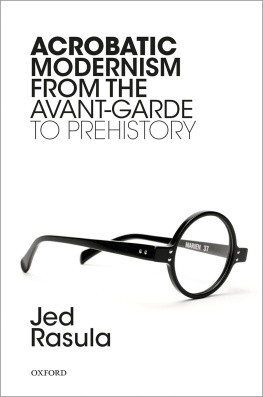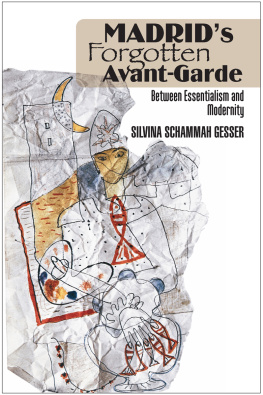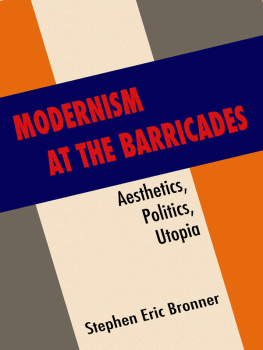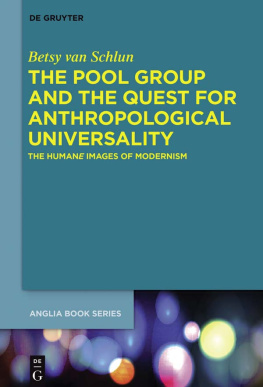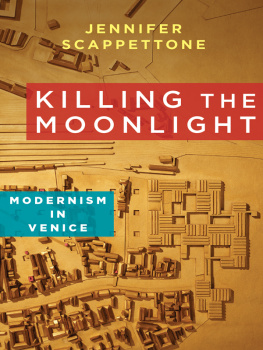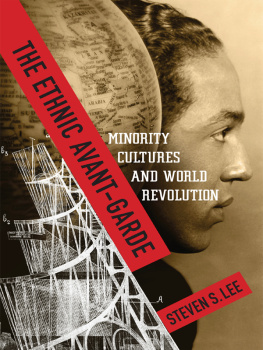Oxford University Press is a department of the University of Oxford. It furthers the Universitys objective of excellence in research, scholarship, and education by publishing worldwide. Oxford is a registered trade mark of Oxford University Press in the UK and in certain other countries
All rights reserved. No part of this publication may be reproduced, stored in a retrieval system, or transmitted, in any form or by any means, without the prior permission in writing of Oxford University Press, or as expressly permitted by law, by licence or under terms agreed with the appropriate reprographics rights organization. Enquiries concerning reproduction outside the scope of the above should be sent to the Rights Department, Oxford University Press, at the address above
You must not circulate this work in any other form and you must impose this same condition on any acquirer
Preface
Its an image familiar from photographs, movies, woodcuts, paintings, rendered in words and even music: columns of skyscrapers rising majestically, convening the skyline as the acme of architectural finesse, arousing a skyscraper mysticism.
Perpetuating nineteenth-century visions of grand vistas gleaned through dissipating cloudbanks, Hugh Ferriss evokes the metropolis of tomorrow in his 1929 book of that title, asking the reader to envision a city engulfed in fog, with an observer on the topmost balcony of a skyscraper feeling the railing dark and wet as an ocean liners. To an imaginative spectator, it might seem that he is perched in some elevated stage box to witness some gigantic spectacle, some cyclopean drama of forms; and that the curtain has not yet risen. This was in fact Ferrisss own experience, as resident on the seventeenth floor of a Manhattan building for over forty years. Alfred Stieglitz and Georgia OKeeffe lived on the thirtieth floor of the Shelton Hotel; and, at that height, Stieglitz wrote Sherwood Anderson, Georgia and I somehow dont seem to be of New Yorknor of anywhere. At such altitude, we feel as if we were out at midocean. Anyone whos spent a night, a week, or longer in one of todays Manhattan skyscrapers will recognize the otherworldly exhilaration, the sense of being partner to passing clouds, high above the human squalor below.
Vaulted into a theatrical expectancy, sensing an impending grand voyage, being above it all risks consigning whats below to an unwelcome, even infernal, chaos. Ferriss acknowledged as much: Going down into the streets of a modern city must seem, he suggested, a little like Dantes descent into Hades. In the upper strata of the skyscraper one could breathe in the purified air of modernity, while street level uncomfortably blended time past, unwelcome hordes, and an uncertain future in what Bertolt Brecht called the jungle of cities (Im Dickicht der Stdte), a realm depicted by architect Hermann Finsterlin as a glistening monster, groaning and bickering, with its shrill roar that slurps and hammers a conglomeration of poverty and greed, of dirt, hate, and stone. Different sensibilities detected different aspects of this milieu. The grinning monster could also be the harbinger of a beguiling new soundscape, rousing another architect to discern aesthetic marvels within the shrill roar:
With what muted passion the waiting multitudes jostle and shuffle, and how varied are the voices of automobiles, their oncoming rush, the cry of the klaxons, and then, gradually emerging into audibility, the rhythmic throb of the pistons, sometimes a roar, sometimes a heavy thump, sometimes keeping time with a delicately metallic ring and finally, close by, the siren song of the wheels, as their spokes strike the air, and the quiet, slithering crunch of the rubber tires.
Street-level experience accommodated both perspectivesmanifold sensation and distressing assaultand the challenge of modernism was to heed the claims. The sentinel in the skyscraper, after all, had to exit the building from time to time, meeting the throng and facing the din.
Lionization of the isolate artist, the master builder, the literary titan, has bequeathed a misleading notion that special agents high in those skyscrapers merit all the credit for artistic ingenuity. Where modernism is concerned, one could call it the PicassoEliotStravinsky effect. Its high time, though, to put a check on the familiar roll-call of canonical titans. The titansworn ragged with casual recitationwere always part of a context, and those contexts were far more extensive than previously recognized. After all, they too left the writing desk and the studio to plunge into the crowd. Scholarship in the humanities has largely followed the specialist model of the sciences; but instead of some big lab on modernism tout court, spanning the arts, theres no lab. So literary scholars have one list of names, art historians another, with astonishingly little overlapto say nothing of research on film, dance, music, design, history of technology, fashion, and more. This flies in the face of the lives of the modernists themselves, who were promiscuously engaged with arts other than their own: down on the boulevard, not up on a skyscraper balcony. In History of a Shiver (Oxford University Press, 2016) I surveyed the impetus from the nineteenth century into the twentieth to blend and blur protocols across the arts. Modernism names this profligate propensity to wander, drift, go astray courting another medium, another arteven while ostensibly sustaining a given practice like painting or poetry. This widespread artistic poly-androgyny was contagious as the Spanish flu.
Accordingly, the reader is advised to expect a swarm. The following pages summon the torrent of modernism as torrent, with its ungainly multitudes and unstoppable profusion. Ive adopted this tactic in deliberate contrast to scholarly norms that focus on a few salient samples. While there are some extended engagements with certain individualsAby Warburg and H.D. in my purpose is rather to let the swarm swarm. The point is to put on display the motley collective germane to the subject. Modernism was avowedly collective in all sorts of ways, ranging from the avant-gardes to political initiatives, while casually sweeping up mass enthusiasm, as in the vogue for jazz in the wake of the Great War. But modernism also names unintended collectives, like the avid embrace of the new by artists and writers in a steady chorus of proclamations spanning decades. Lionized for its originality, what now merits attention in modernism is not originality but convergenceconvergence of instincts, thoughts, wishes, prayers, gripes, and curses. Modernism is a seething cauldron in this respect, proof of which I adumbrate in the chapter Make It New, in which Ezra Pounds famous slogan is given a choral rendition befitting its perpetual echo. The chorale is acute there, but its evident throughout this book, which among other things tries to put a check on credulous exceptionalism in modernist studies. Yes, the flamboyance of figures like Pound or Elsa von Freytag Loringhoven makes for compelling anecdotes, but its important to remember that for all the anecdotal riptide accruing to the fabled Lost Generation, that phrase was intended by Gertrude Stein as generic, not individuating. Much of the force of modernism is the generic nature of its pledges and expectations, even as the actual products may be idiosyncratic. So lets acknowledge both the beauty of exceptions and the laws that solicit lawlessness.

